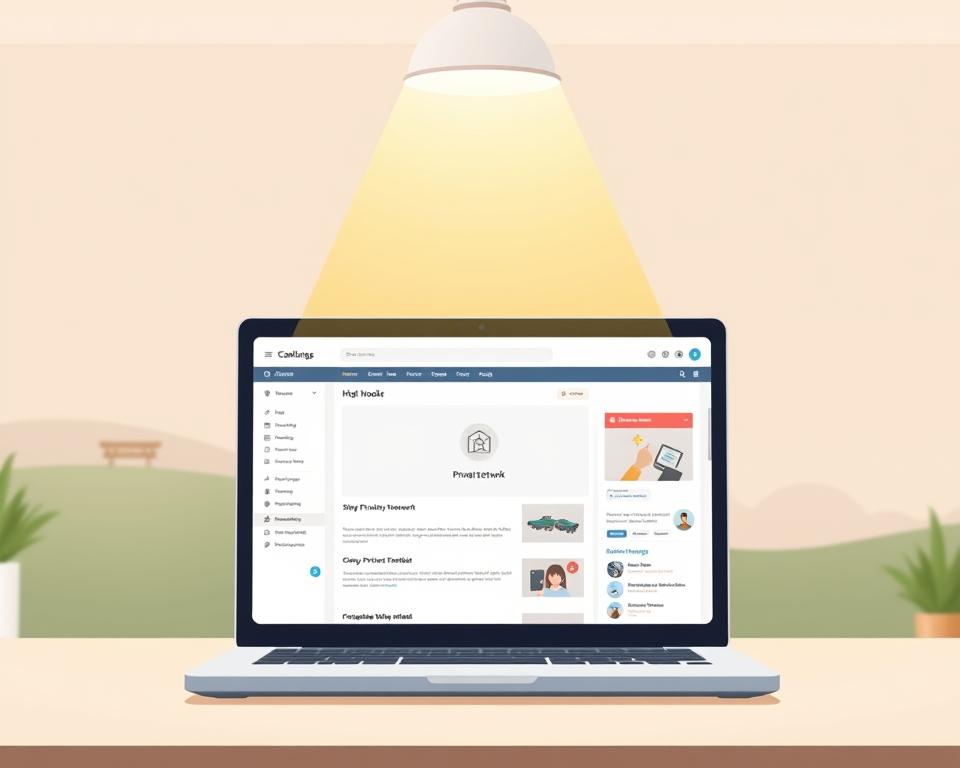Understanding Private Blog Network Links
Did you realize almost 60% of SEO experts have employed PBN links? A PBN’s main draw lies in how it can elevate a domain’s credibility. That often translates into higher SERP positions. But, what does PBN in SEO really entail? Although it appears to offer rapid ranking gains, PBN services carry substantial dangers. These include severe penalties from Google. Let’s explore private blog service basics and why so many in SEO find them irresistible.
What is a Private Blog Network (PBN)?
Essentially, a PBN is a cluster of blogs designed to funnel link juice to a primary domain. Its goal is to boost rankings by channeling link authority from the network to your main site. Often these networks rely on expired domains that still hold some mojo, crafting a veneer of legitimacy.
A PBN’s intent is straightforward. Site owners use them to improve their online presence. They achieve this through:
- Securing high-value links that elevate SERP standings.
- Controlling the quality and relevance of these backlinks.
- Creating an ecosystem of interlinked blogs that appear organic.

Mechanics of PBN Backlinks
They function by simulating organic endorsements through private blog network backlinks. Each PBN link is engineered to deceive crawlers into thinking it’s a genuine vote of confidence.
SEO practitioners meticulously map keyword and domain usage throughout their network. Rapid uplift comes hand in hand with steep penalty prospects.
Backlinks should be cloaked within credible, value-driven articles to avoid detection.
PBN Benefits
A private blog network (PBN) offers numerous advantages for SEOs looking to enhance their backlink profiles. PBNs let you dictate exactly how, where, and when your links appear.
Expired domains give you a head start on link authority.
Further, the flexibility found in PBNs allows for precise targeting of keyword-rich anchor texts.
The Risks Associated with Private Blog Networks
Yet, these tactics are fraught with peril. A major concern is the risk of Google penalizing websites that use these networks.
Why PBNs Still Tempt SEOs
Guest posting and manual outreach take time and resources. They promise speed and predictability in link acquisition.
Best Practices for Managing PBNs
Effective pbn management demands careful attention and adherence to best practices. Begin with thorough due diligence when purchasing expired domains.
How to Detect PBN Backlinks
Regular backlink audits help unearth PBN footprints.
| Indicators of PBN Links | Description |
|---|---|
| Low-Quality Domains | Links from domains with poor authority or less than optimal rankings. |
| Irrelevant Content | Links embedded in content that does not match your site’s niche. |
| Suspicious Anchor Text | Repetitive or irrelevant anchor text patterns. |
| Thematic Similarity | Lack of a coherent theme among linking pages and domains. |
How to Disavow Private Blog Network Links
- Identify harmful PBN backlinks through thorough analysis.
- Create a disavow file correctly, listing specific URLs or domains to disavow.
- Upload the disavow file to Google Search Console.
Alternatives to Private Blog Networks
High-quality content and influencer collaborations also drive organic links.
Clearing Up PBN Myths
Private Blog Networks (PBNs) are often misunderstood, affecting both new and seasoned SEOs.
Future of Private Blog Networks in SEO
| Factor | PBNs | Future SEO Practices |
|---|---|---|
| Content Quality | Low emphasis on genuine content | High emphasis on high-quality, valuable content |
| Risk Factor | High risk of penalties | Lower risk with authentic practices |
| User Engagement | Limited engagement | Enhanced user interaction and loyalty |
| Sustainability | Unsustainable in the long term | Focus on sustainable growth |
Wrapping It Up
Yet, the ethical and practical risks are substantial.
